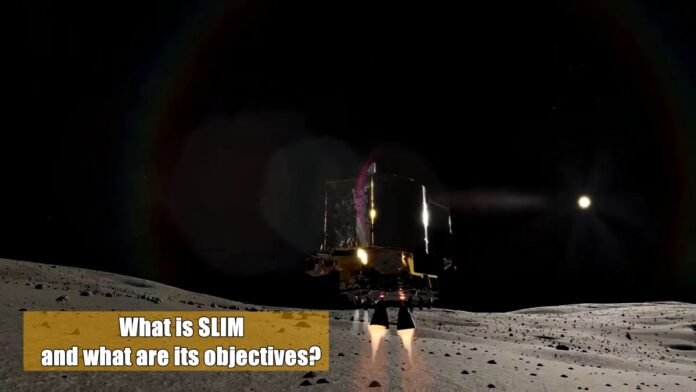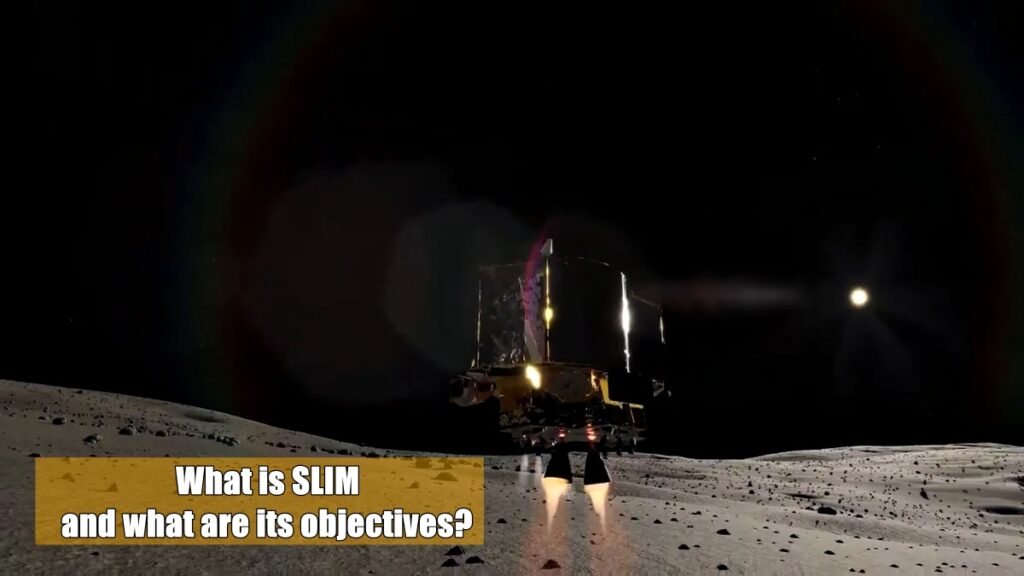
New Delhi: SLIM, which stands for Smart Lander for Moon Investigation, is Japan’s first lunar lander mission that aims to demonstrate the country’s technological capabilities and scientific interests in exploring the Moon. SLIM is a small and lightweight spacecraft, weighing about 150 kg and measuring about 2.5 m in height and 1.8 m in diameter. SLIM is equipped with a camera, a laser altimeter, a seismometer, and a retroreflector.
The main objectives of SLIM are to achieve a precise and soft landing on a complex terrain on the lunar surface, to conduct scientific observations and measurements of the landing site, and to test the communication and navigation systems of the spacecraft. SLIM also intends to collect data on the lunar geology, topography, gravity, and seismic activity, which will contribute to the understanding of the origin and evolution of the Moon.
How did SLIM reach the Moon and where did it land?
SLIM was launched on September 7, 2023, by a Japanese-made Epsilon rocket from the Uchinoura Space Center in Kagoshima Prefecture. The launch was successful and SLIM entered a low Earth orbit, where it performed several maneuvers and tests to prepare for its journey to the Moon. SLIM then used its propulsion system to escape the Earth’s gravity and head towards the Moon. SLIM reached the lunar orbit on December 25, 2023, after a journey of more than four months and a distance of about 380,000 km.
SLIM targeted a landing site on the Oceanus Procellarum, or the Ocean of Storms, which is a large and dark plain on the western edge of the near side of the Moon. The landing site was chosen because it is relatively flat and smooth but also has some craters and hills that pose a challenge for the landing. SLIM aimed to land on a specific spot within a 100 m radius, which required a high level of accuracy and precision. SLIM used its camera and laser altimeter to identify the landing site and adjust its trajectory and speed accordingly.
SLIM touched down on the lunar surface at around 12:20 am local time on January 21, 2024, making Japan the fifth country to successfully land a spacecraft on the Moon, after the US, Russia, China, and India. SLIM landed on the exact spot that it had targeted, with a resolution of 6000 x 4000 pixels, which is the highest ever achieved by any lunar lander. SLIM also survived the impact and remained intact and functional after the landing.
What are the challenges and achievements of SLIM?
SLIM faced several challenges and risks during its mission, such as the harsh environment of space, the complex and variable gravity of the Moon, the communication delays and interferences, and the possibility of failures and errors in the spacecraft’s systems and components. SLIM also had to deal with the limited budget and resources of the mission, which constrained the size, weight, and performance of the spacecraft. SLIM had to rely on its intelligence and autonomy to execute the landing, as there was no human intervention or control from the ground.
Despite these challenges, SLIM achieved several remarkable feats and milestones, such as:
- SLIM is the first lunar lander mission developed and operated by Japan, which showcases the country’s technological advancement and leadership in space exploration.
- SLIM is the smallest and lightest lunar lander ever launched, which demonstrates the efficiency and innovation of the Japanese space industry and engineering.
- SLIM is the first lunar lander to use a solid rocket motor as its main propulsion system, which reduces the cost and complexity of the mission.
- SLIM is the first lunar lander to perform a pinpoint landing on a complex terrain on the Moon, which proves the accuracy and precision of the spacecraft’s navigation and guidance systems.
- SLIM is the first lunar lander to achieve a high-resolution landing, which provides a detailed and clear view of the landing site and its surroundings.
What are the next steps and implications of SLIM?
SLIM is expected to operate for about two weeks on the lunar surface, during which it will conduct various scientific experiments and observations. SLIM will also communicate with the Earth and transmit the data and images that it has collected. SLIM will also receive commands and instructions from the Japan Aerospace Exploration Agency (JAXA), which is the main organization responsible for the mission. JAXA will also hold a news conference to announce the official results and status of the mission and to answer questions and queries from the media and the public.

SLIM is a significant and historic achievement for Japan and the world, as it opens new possibilities and opportunities for lunar exploration and utilization. SLIM also enhances the scientific knowledge and understanding of the Moon, which is a valuable and fascinating celestial body. SLIM also inspires and encourages future generations of scientists, engineers, and explorers, who will continue to pursue the challenges and wonders of space. SLIM also contributes to international cooperation and collaboration in space, as it joins the efforts and endeavors of other countries and organizations that have explored and landed on the Moon.






















































